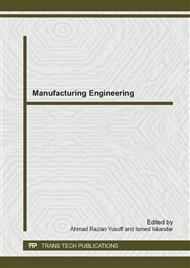p.181
p.187
p.194
p.200
p.209
p.215
p.221
p.227
p.233
Cooling System for Electric Motor of an Electric Vehicle Propulsion
Abstract:
Electric motor performance directly affects the overall performance of an electric vehicle (EV). The electric motor windings heats up when operated under extreme load and hence, reducing the efficiency of the vehicle. As such, EV propulsion system requires cooling systems, not only to the electric motor but also to the battery banks in order to ensure efficient operation and maximizing the electric components and vehicle lifetime. The project focuses on the design and development of a liquid cooling system for an electric vehicle propulsion system to determine the optimum size and cooling capacity by thermodynamic analysis. This paper described the analysis of energy transfer (heat removal) by using thermal resistance network approach in determining the suitable design for the cooling system of an AC-50 induction electric motor. The CAD drawing was generated to suit the dimension constrain and the cooling system was completed using CATIA software. The results showed that the optimal design for the water jacket for the maximum heat removal of 5500 W from the electric motor, should have a wall thickness of 0.5 cm with an annular thickness of 2.4 cm. Both copper and aluminium exhibited similar cooling capabilities with the latter having lower cost and ease of manufacturing.
Info:
Periodical:
Pages:
209-214
Citation:
Online since:
February 2014
Authors:
Keywords:
Price:
Сopyright:
© 2014 Trans Tech Publications Ltd. All Rights Reserved
Share:
Citation:


